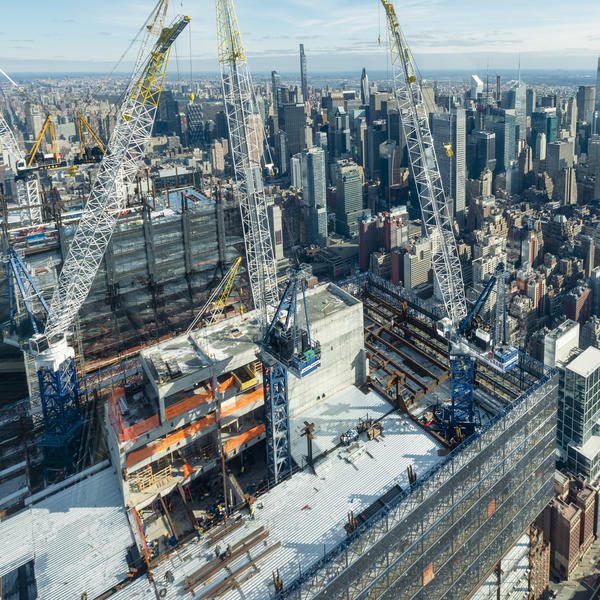The global construction industry grew about 6.37 percent in 2021, according to GlobalData, making up about 12 percent of the global GDP. The construction industry shows no signs of slowing down—Oxford Economics predicted an average annual growth of 3.6 percent between now and 2030, an output about 35 percent higher than 2010 to 2020.
One major driving force behind this unprecedented growth is infrastructure construction. Oxford Economics predicted infrastructure construction to grow 6.8 percent in 2021 and to be the fastest-growing sub-sector through 2030, with an expected annual growth of almost 4 percent. This infrastructure construction influx is largely because of projects being delayed from 2020 to 2021 because of the COVID-19 pandemic, supply chain disruptions, and economic shutdowns. Additionally, the $1.2 trillion Bipartisan Infrastructure Bill in the US will further increase the growth of the industry in the next few years.

Photo Credit: Hudson Yards
While the growing construction demand is positive for the industry as a whole, it has caused some issues in the 2021 construction industry.
For example, the residential construction industry is currently struggling to meet the high demands of the 2021 construction needs. According to the latest US Census Bureau report, residential construction dropped by 0.7 percent in October compared to September while new permits issued for future construction grew by 4 percent.
As for the year’s construction trends, the demand for sustainable and eco-friendly construction materials has continued to boom. In a 2021 survey of homeowners conducted by 3M, 70 percent of homeowners answered that they plan to purchase eco-friendly materials for their next renovation. For example, eco-friendly materials for homeowners include 3M’s Smog-reducing roof granules that help remove smog pollutants in the community.
Commercial construction is also pushing towards eco-friendly materials. In a global survey from 2021 across multiple sectors, 47 percent of the engineering and construction executive respondents placed sustainability at a top-of-mind or major concern. Sustainable materials for industrial use include 3M’s VentureClad™ Insulation Jacketing System to reduce energy waste from building envelopes.
Looking towards the 2022 construction industry, greater demands for better infrastructure and eco-friendly products are predicted. As a result, experts predict that the industry’s growth will continue through the year.
For more information on innovations in construction materials, stream Tomorrow’s World Today’s presentation of “Material Science Meets Building Sciences” on SCIGo and Discovery GO!







